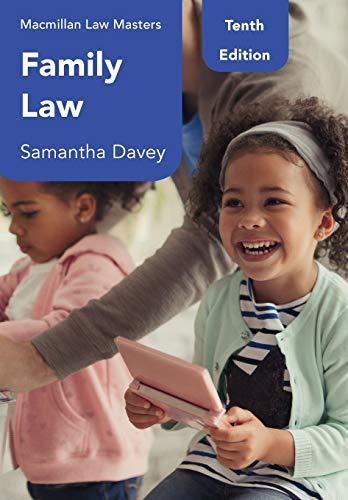Question
How do we determine if a person's rights have been violated? If they have been, how do we determine if the violation was Reasonable or
How do we determine if a person's rights have been violated?
If they have been, how do we determine if the violation was "Reasonable" or not?
The courts often must decide if a person's rights have been violated, and if so, whether or not the violation was Reasonable.
- Read the following cases.
- Provide a thoughtful and detailed comment on the definition of what is a "Reasonable Limit" based on anyoneof the cases.
R. v. Collins, 1987: Undercover police officers used a choke hold to search Ruby Collins for drugs. It turned out that she did not have any drugs in her mouth, although she did have some in her hand. Collins argued that the search and seizure violated section 8 of the Charter. The Supreme Court ruling established a test for a reasonable search. The police must have reasonable grounds for carrying out a search and must act fairly while conducting it. The court also declared that evidence obtained in an unreasonable manner cannot be used in court if it would interfere with the fairness of the trial.
R. v. Keegstra, 1990:James Keegstra was an Alberta high school teacher. He was charged with promoting hatred toward an identifiable groupin this case, Jewish people. He argued that his freedom of expression was violated. However, the court allowed section 1 of the Charter to limit his freedom of expression. Canada's hate-crime laws are a reasonable limit on our freedom of expression. They protect groups from hate speech.
Vriend v. Alberta, 1998:Delwin Vriend was an Alberta Christian college teacher. He was fired because he was gay. Vriend wanted to challenge his dismissal as discrimination under provincial human rights legislation. However, Alberta's Human Rights, Citizenship, and Multiculturalism Act only recognized discrimination on the basis of sex, not sexual orientation. Vriend argued at the Supreme Court that the act violated his equality rights. It did not protect him from discrimination on the basis of his sexual orientation. The court agreed. However, it did not rule that the human rights law was unconstitutional. Instead, the court ordered the Alberta government to include sexual orientation as a prohibited ground of discrimination under the law.
Step by Step Solution
There are 3 Steps involved in it
Step: 1

Get Instant Access to Expert-Tailored Solutions
See step-by-step solutions with expert insights and AI powered tools for academic success
Step: 2

Step: 3

Ace Your Homework with AI
Get the answers you need in no time with our AI-driven, step-by-step assistance
Get Started


